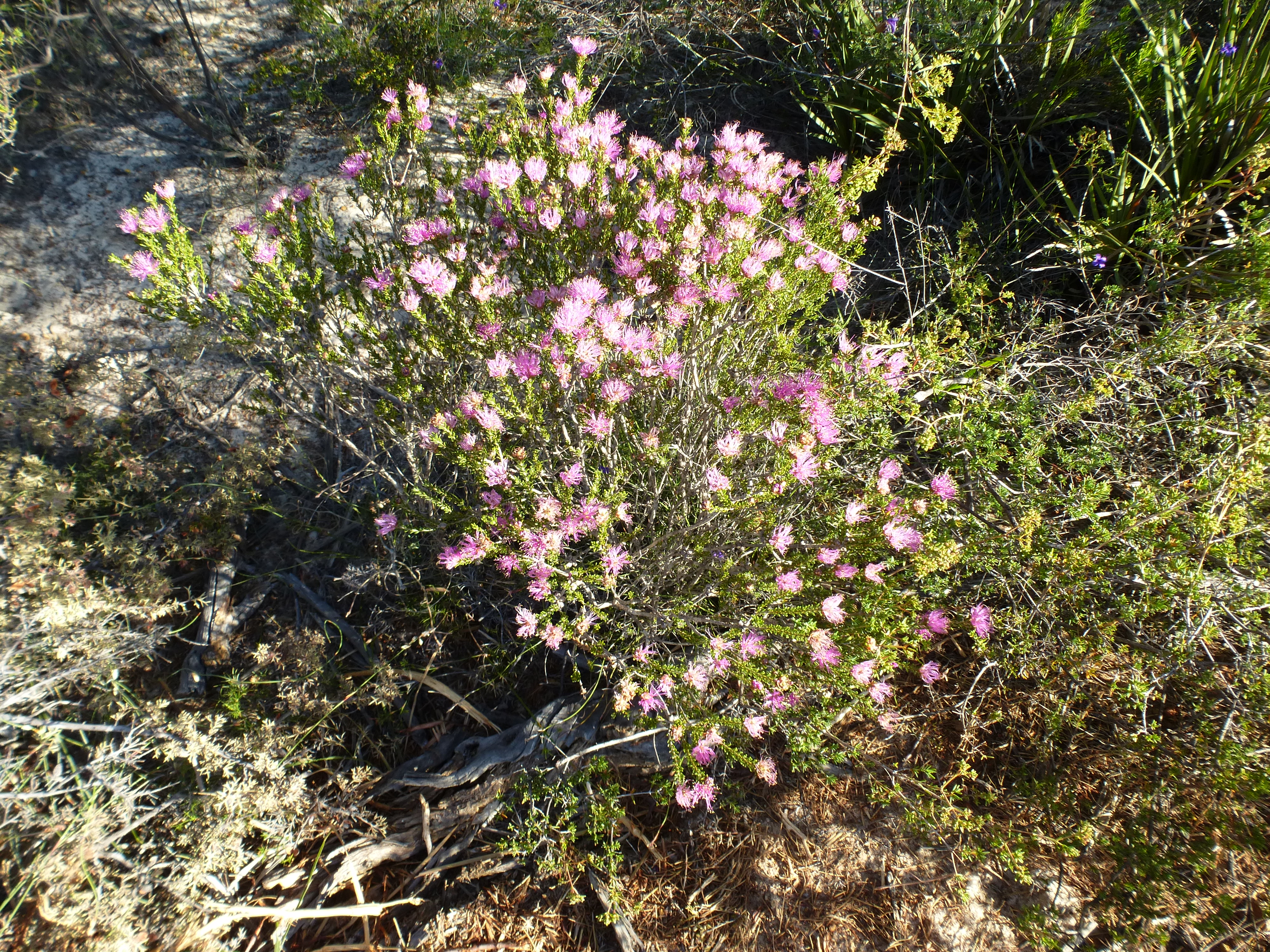Melaleuca Bisulcata on:
[Wikipedia]
[Google]
[Amazon]
''Melaleuca bisulcata'' is a plant in the myrtle family,


Myrtaceae
Myrtaceae, the myrtle family, is a family of dicotyledonous plants placed within the order Myrtales. Myrtle, pōhutukawa, bay rum tree, clove, guava, acca (feijoa), allspice, and eucalyptus are some notable members of this group. All speci ...
and is endemic to the a relatively small area on the west coast of Western Australia. It is difficult to distinguish this species from '' Melaleuca psammophila'' except on differences in the shape of the calyx
Calyx or calyce (plural "calyces"), from the Latin ''calix'' which itself comes from the Ancient Greek ''κάλυξ'' (''kálux'') meaning "husk" or "pod", may refer to:
Biology
* Calyx (anatomy), collective name for several cup-like structures ...
lobes.
Description
''Melaleuca bisulcata'' is a shrub growing to a height of . The leaves are crowded, arranged alternately and long and wide. The flowers are arranged in heads at the ends of branches, with the branch continuing to grow after flowering. Each head has 1 to 4 groups of flowers in pairs or threes. The stamens are arranged in five bundles around each flower, 6 to 12 stamens per bundle, coloured pink, purple or magenta. Flowering occurs in September and October and the fruit which follow are woody capsules long.Taxonomy and naming
''Melaleuca bisulcata'' was first formally described in 1862 byFerdinand von Mueller
Baron Sir Ferdinand Jacob Heinrich von Mueller, (german: Müller; 30 June 1825 – 10 October 1896) was a German-Australian physician, geographer, and most notably, a botanist. He was appointed government botanist for the then colony of Vict ...
in '' Fragmenta Phytographiae Australiae'' from a specimen found "in the desert near the Murchison River by Augustus Oldfield
Augustus Frederick Oldfield (1821–1887) was an English botanist and zoologist who made large collections of plant specimens in Australia.
Oldfield was born on 12 January 1821 in London, England. He made botanical collections in Tasmania, the coa ...
". The specific epithet
In taxonomy, binomial nomenclature ("two-term naming system"), also called nomenclature ("two-name naming system") or binary nomenclature, is a formal system of naming species of living things by giving each a name composed of two parts, bot ...
(''bisulcata'') is from the Latin ''bi-'' meaning "two" and ''sulcatus'', "furrowed" or "grooved", referring to the dried leaves often having two longitudinal grooves".
Distribution and habitat
This melaleuca occurs in the Kalbarri district in the Geraldton Sandplains and Yalgoobiogeographic regions
A biogeographic realm or ecozone is the broadest biogeographic division of Earth's land surface, based on distributional patterns of terrestrial organisms. They are subdivided into bioregions, which are further subdivided into ecoregions.
De ...
of Western Australia. It grows in sand, clayey sand and gravel over laterite on sandplains and roadsides.
Conservation status
''Melaleuca bisulcata'' is listed as "not threatened" by theGovernment of Western Australia
The Government of Western Australia, formally referred to as His Majesty's Government of Western Australia, is the Australian state democratic administrative authority of Western Australia. It is also commonly referred to as the WA Government o ...
Department of Parks and Wildlife
The Department of Parks and Wildlife (DPaW) was the department of the Government of Western Australia responsible for managing lands described in the ''Conservation and Land Management Act 1984'' and implementing the state's conservation and e ...
.
References
{{Taxonbar, from=Q15370811 bisulcata Myrtales of Australia Plants described in 1862 Endemic flora of Western Australia Taxa named by Ferdinand von Mueller